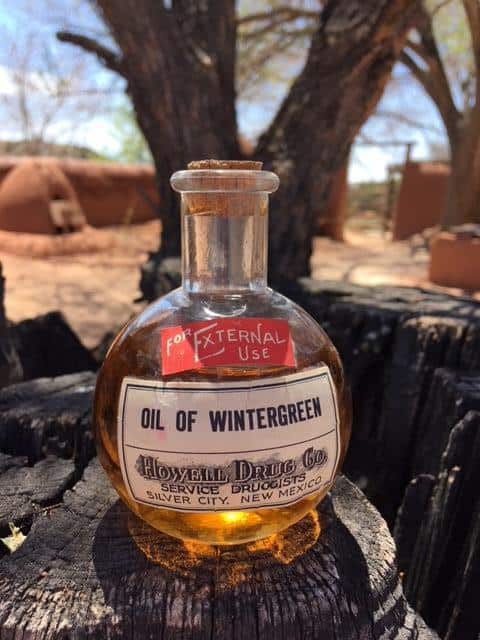Object of the Month

By Amanda Mather
When you volunteer in or visit the Tiendita, (the small store), you will find many odd looking bottles filled with brightly colored liquids with unique old labels on the shelves. What were these remedies and chemicals, and what did people in the late 1800s use them for? Let’s start with wintergreen oil. The properties of wintermint are several fold, one medicinal and one as a bug deterrent.
Methyl salicylate is the chemical compound people were seeking from wintergreen oil. If salicylate sounds familiar to you, it should. Wintergreen oils are still used to this day, in muscle rubs like Bengay, due to its chemical property of metabolizing into pain relieving salicylate in the human body. This pain reliving property was no doubt why general stores and pharmacies would have stocked their shelves with wintergreen oil before the advent of basic pain relievers like aspirin.
The other property of wintergreen oil, that would have been utilized by the people shopping at the Tiendita, was that it attracted carnivorous bugs which ate other bugs infestung people’s vegetable gardens. Wintermint sends out a pheremonal signal to bug eating bugs that the buffet is open. If you sprinkle some wintergreen oil on your squash plants, carnivorous bugs will arrive, ready to rescue your crop from beetles!
It’s really easy to see why people in the 1800s would have had wintermint in their homes. Between it’s ability to relieve pain and also eliminate bugs on tomato plants, it’s really a helpful oil to have around.
